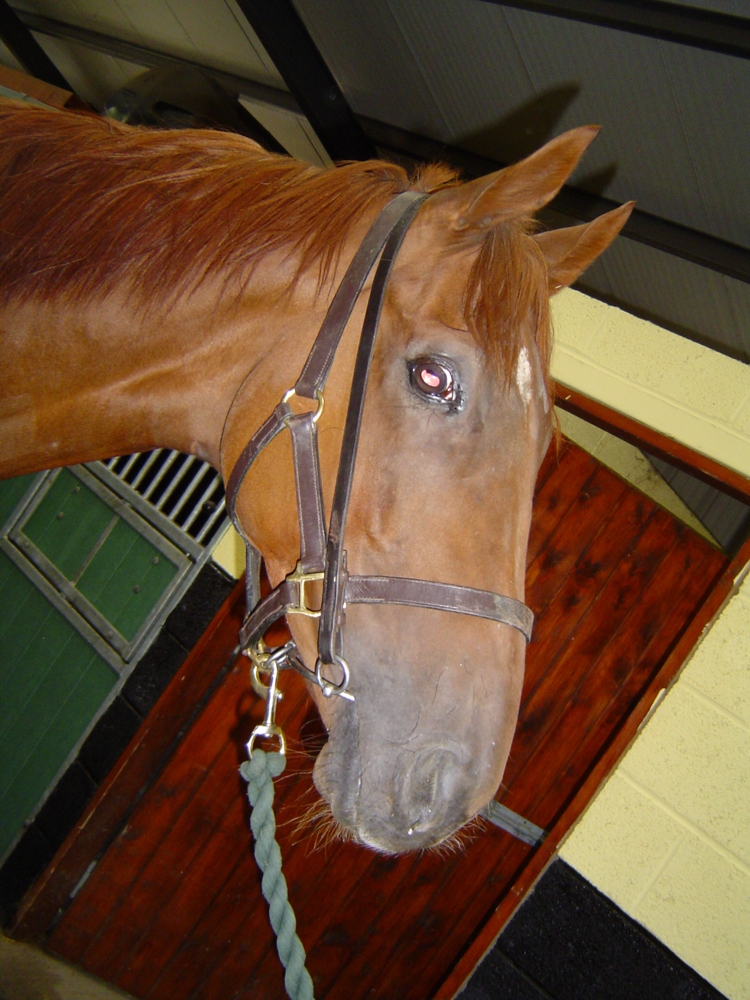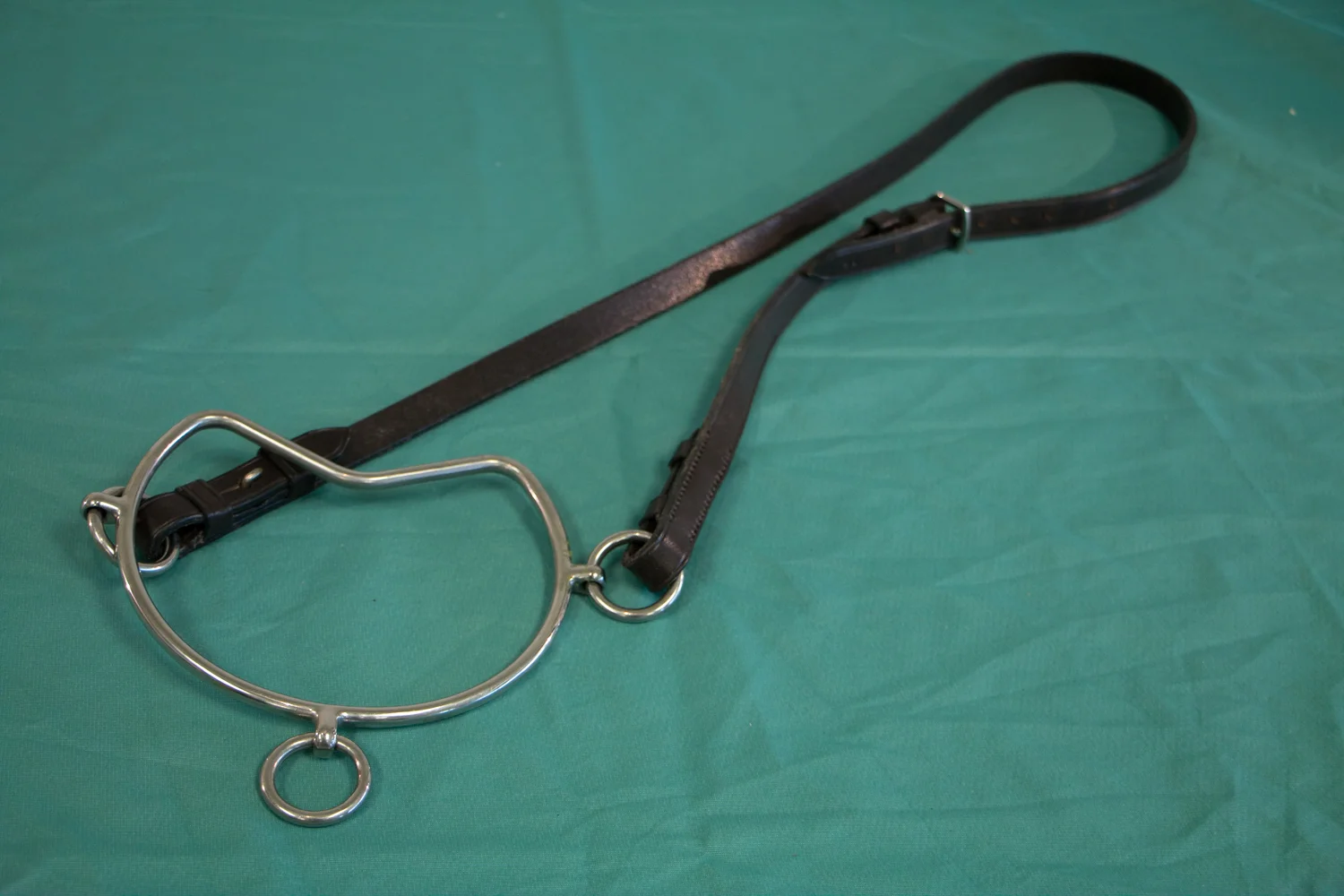Using a chifney bit
A horse wearing a correctly fitted chifney and head collar
Note that the lead rope is clipped on to both the head collar and the ring on the back of the bit.
A chifney bit…
sometimes also called an anti-rearing or ring bit, is designed primarily for horses that are strong or difficult to lead in-hand. It’s a useful piece of equipment and is used as a valuable means of additional restraint where necessary. The majority of horses will not need this level of control but it can be very helpful in facilitating the safe and effective handling of very fresh or unruly animals. It is intended to be used when leading the horse, never during travel or when a horse is tied up.
A chifney bit with a port mouthpiece
The bit consists of a thin circular mouthpiece which is placed around the lower jaw and secured in place with a single headstrap. It is best fitted over a head collar. This allows the lead rope to be attached to both the loose ring on the back of the chifney and the centre ring on the head collar, thereby stabilising the bit within the mouth. Always avoid using the chifney on its own, as if the lead rope is only attached to the loose ring the mouthpiece will pivot excessively if the horse rears up or pulls away from the handler. This can result in severe pressure on the tongue, a painful experience for the horse and mouth injuries such as bruising or tongue lacerations.
The aim is for the horse to learn to respect the chifney and cooperate with the handler. Any bit can cause the horse pain or discomfort if used roughly or incorrectly. However this is especially important with a chifney, as the mouthpiece is much narrower than most other bits. This allows it to exert a lot of force on the tongue and bars of the mouth – try placing one over your forearm and pull on it to get an impression of the pressure it can apply.
The handler should lead the horse calmly and avoid pulling or jerking on the lead rope. The chifney should only come in to play if the horse pulls against it. Exert even traction on the lead if the horse tries to rear or barge past you: allow the horse to feel the contact of the bit and be ready to reward the desired response by relaxing the tension on the lead rope as soon as the horse moves back towards you. Most horses will realise this very quickly and become more cooperative and safer to handle.
Chifneys come in a range of sizes and are fitted like any other bit – they should be wide enough to avoid pinching the bars of the mouth and be secured so that they sit high enough in the mouth to just wrinkle the corners of the lips. Some have a straight mouthpiece while others have an inverted port that sits over the tongue (the latter have the potential to apply more tongue pressure). The single head strap is useful as it means that the bit is quick to apply and easy to adjust to fit a range of head sizes.
In summary, a chifney bit is a useful addition to your practice tack room. It’s not something you will need to use every day or on every horse. However when fitted and used correctly and with care it can make tasks like trotting up the horse who has been on box rest for the last month (and is full of the joys of life) much safer for all involved!


